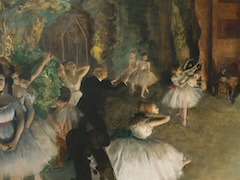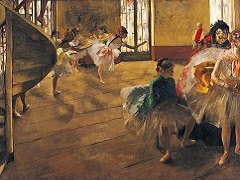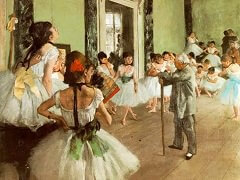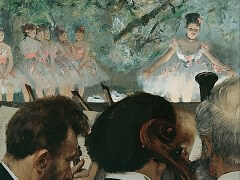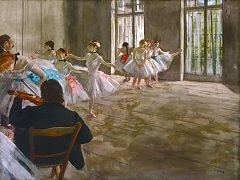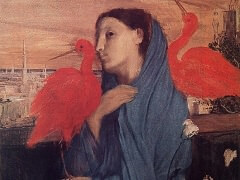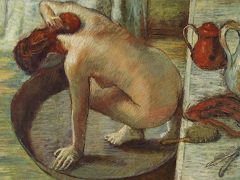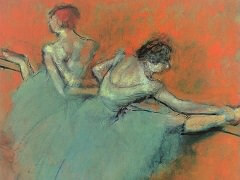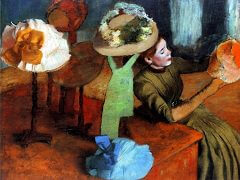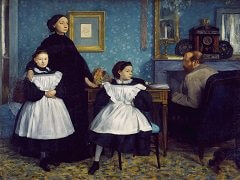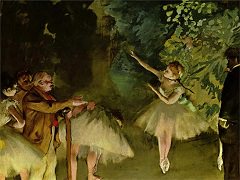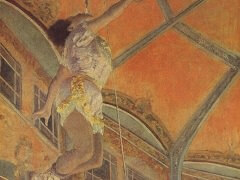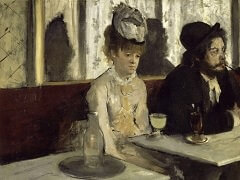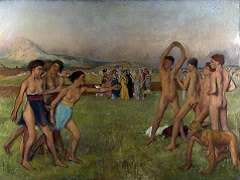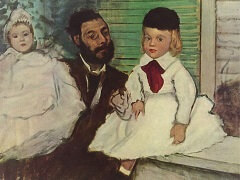Two Dancers Entering the Stage by Edgar Degas
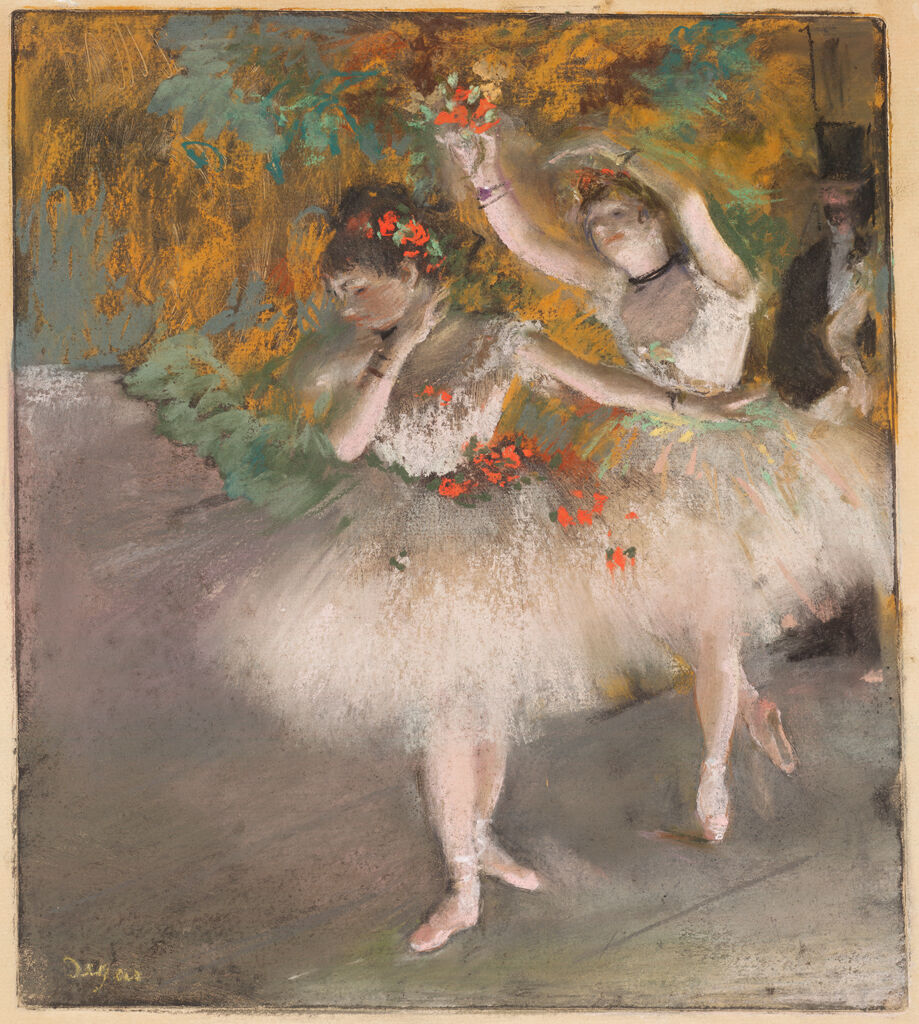
To have observed his subject so closely as to notice and accurately paint these details was more than enough to uphold the realist's burden. Degas goes further. He leaves the ballet instructor out of the painting. Not all dancers are performing the same exercise, and most are not even rehearsing at all. The impression is one of instinctive order, something unnamed that produces uniform positions and progress despite seeming lack of focus on the task at hand. For the mature dancers in the painting, this would have been a natural and essential byproduct of years of training. On the other hand, these dancers are not mere slaves in the corps. The sashes around their waists are different colors, as are the ribbons in their hair; some opt for flowers in their hair instead, or curls rather than a traditional bun. Degas has strived to ensure the uniqueness of each dancer amid the obsession with uniformity, and with a simple game of dress up, he has succeeded.
It is not a coincidence that the details Degas chose to include - those he deemed necessary for a realistic painting - are all core elements of French classical ballet. Concentration on the limbs and the body because the face only gets in the way. A corps made up of individual, distinct dancers who are recognized as such but move as one and do not draw attention to themselves. Discipline and muscle memory of position that can only be acquired through classical conditioning. Degas may not have shared the classicist's devotion to unlocking essence through formal technique, but he has demonstrated virtuosity in realism through understanding the essence of his subject. Indeed, if The Rehearsal is more than a rendering of dancers in rehearsal, it is a meditation on the role of essence in classicism and realism, artistic movements on opposite ends of the spectrum. Granted, the two interact with essence in different ways - one seeks to find it within itself, the other seeks to paint its portrait. But they both ultimately speak in the language of essence; it guides them through their art, gives them an objective and a definition.

